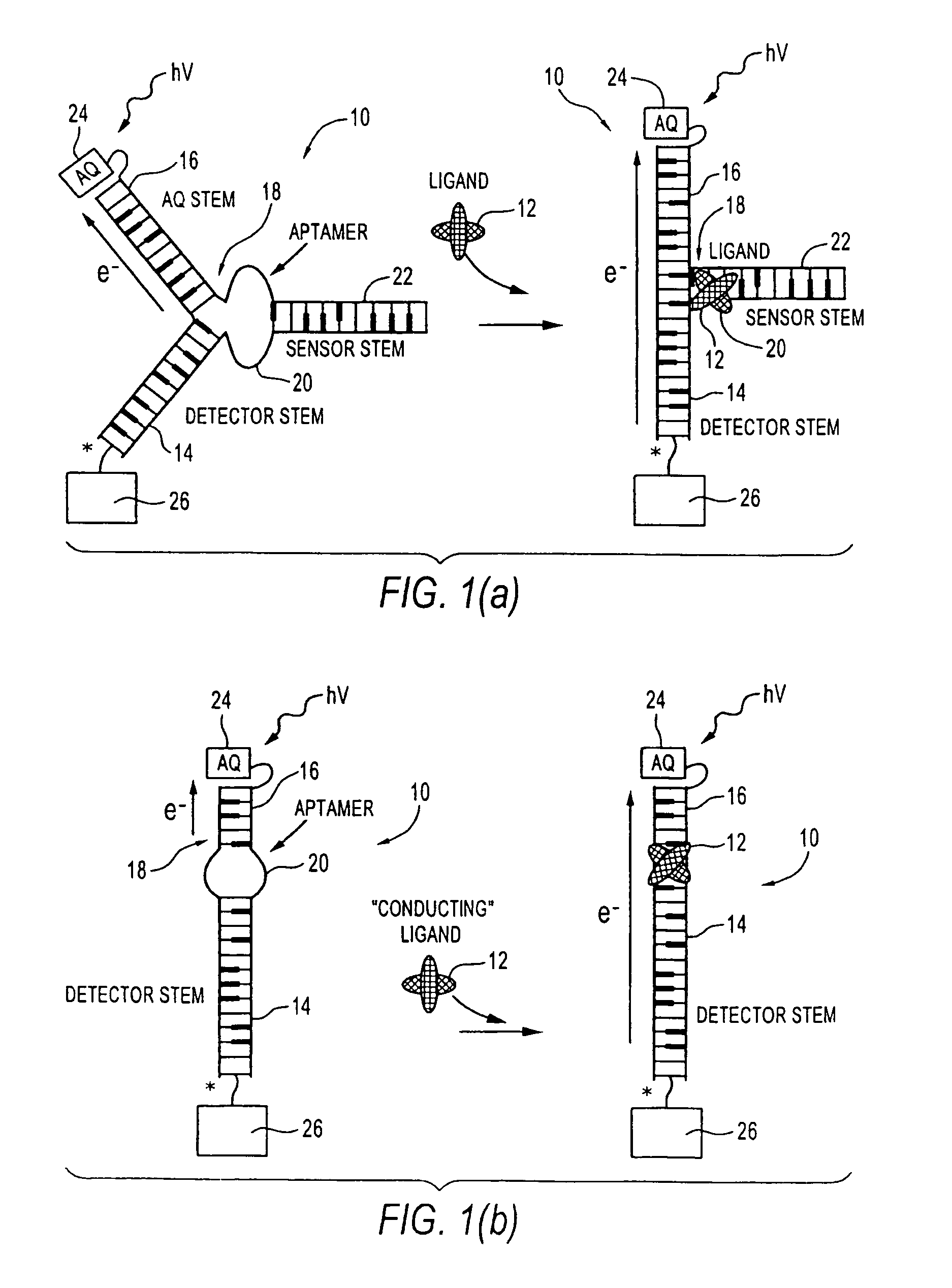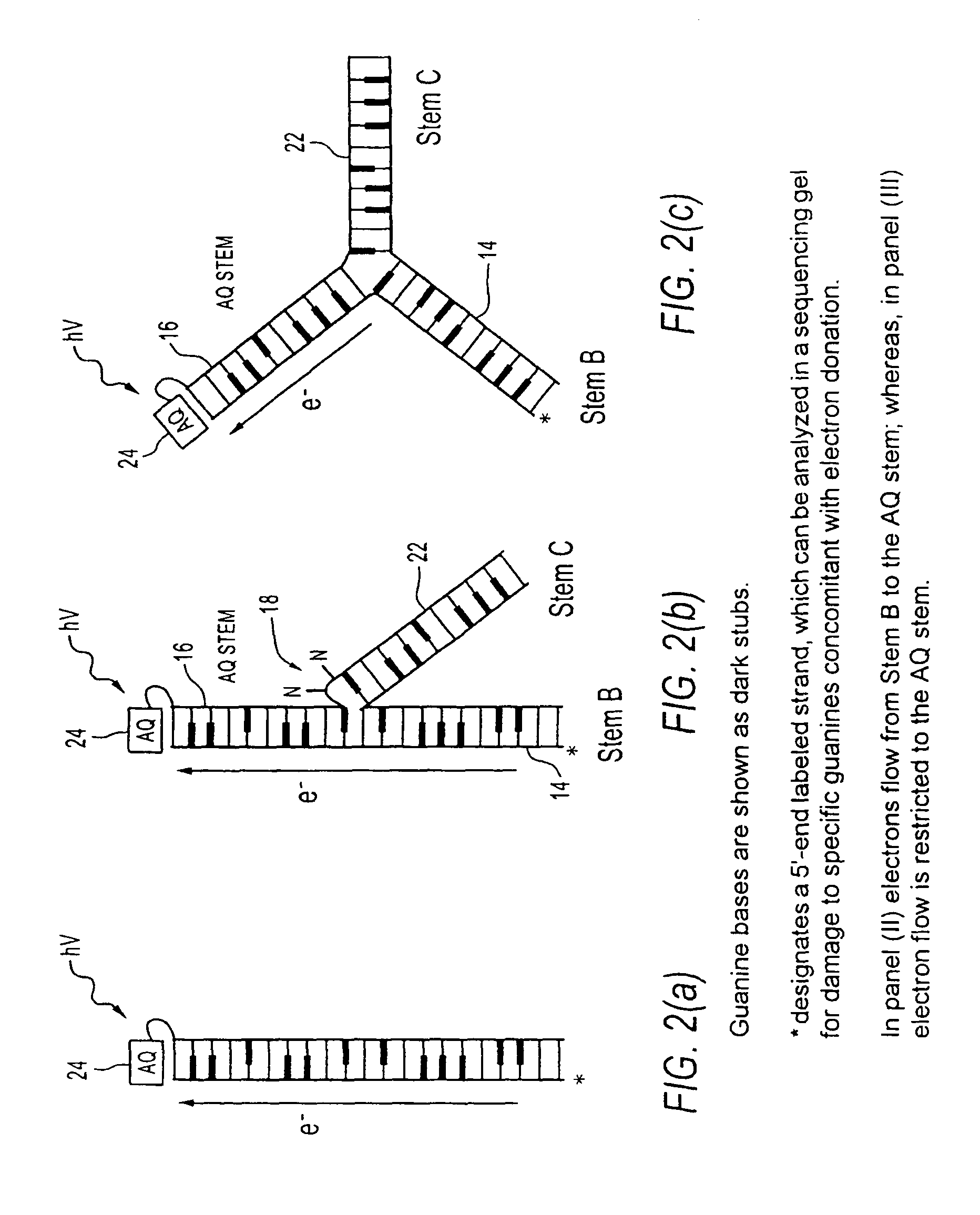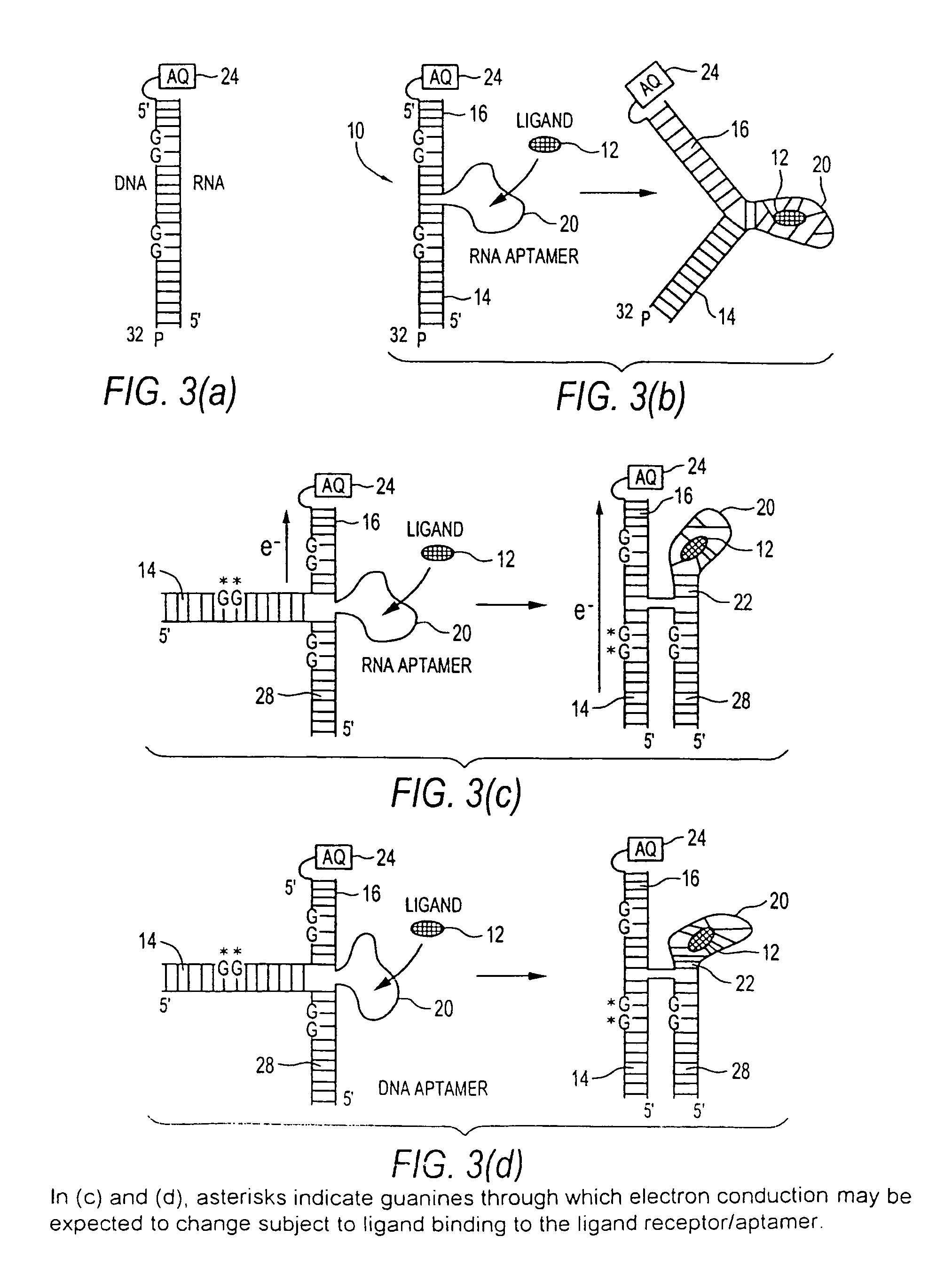DNA conformational switches as sensitive electronic sensors of analytes
a technology of conformational switches and electronic sensors, applied in the field of biosensors, can solve the problems of removal or lessening of base stacking distortion or misalignment, and achieve the effect of increasing charge transfer
- Summary
- Abstract
- Description
- Claims
- Application Information
AI Technical Summary
Benefits of technology
Problems solved by technology
Method used
Image
Examples
Embodiment Construction
[0044]Throughout the following description specific details are set forth in order to provide a more thorough understanding of the invention. However, the invention may be practiced without these particulars. In other instances, well known elements have not been shown or described in detail to avoid unnecessarily obscuring the present invention. Accordingly, the specification and drawings are to be regarded in an illustrative, rather than a restrictive, sense.
[0045]As used in this patent specification, the following terms shall have the following respective meanings:
[0046]“analyte” means a molecular entity capable of binding to a receptor. Analyte may include chemical compounds, such as hormones or drugs, antigens, metabolic cofactors, nucleotides, nucleic acid segments, ligands, peptides, proteins, carbohydrates, fats or any other organic or inorganic materials capable of binding to a receptor.
[0047]“aptamer” means a single or multi-stranded non-naturally occurring nucleotide seque...
PUM
| Property | Measurement | Unit |
|---|---|---|
| pH | aaaaa | aaaaa |
| pH | aaaaa | aaaaa |
| distance | aaaaa | aaaaa |
Abstract
Description
Claims
Application Information
 Login to View More
Login to View More - R&D
- Intellectual Property
- Life Sciences
- Materials
- Tech Scout
- Unparalleled Data Quality
- Higher Quality Content
- 60% Fewer Hallucinations
Browse by: Latest US Patents, China's latest patents, Technical Efficacy Thesaurus, Application Domain, Technology Topic, Popular Technical Reports.
© 2025 PatSnap. All rights reserved.Legal|Privacy policy|Modern Slavery Act Transparency Statement|Sitemap|About US| Contact US: help@patsnap.com



